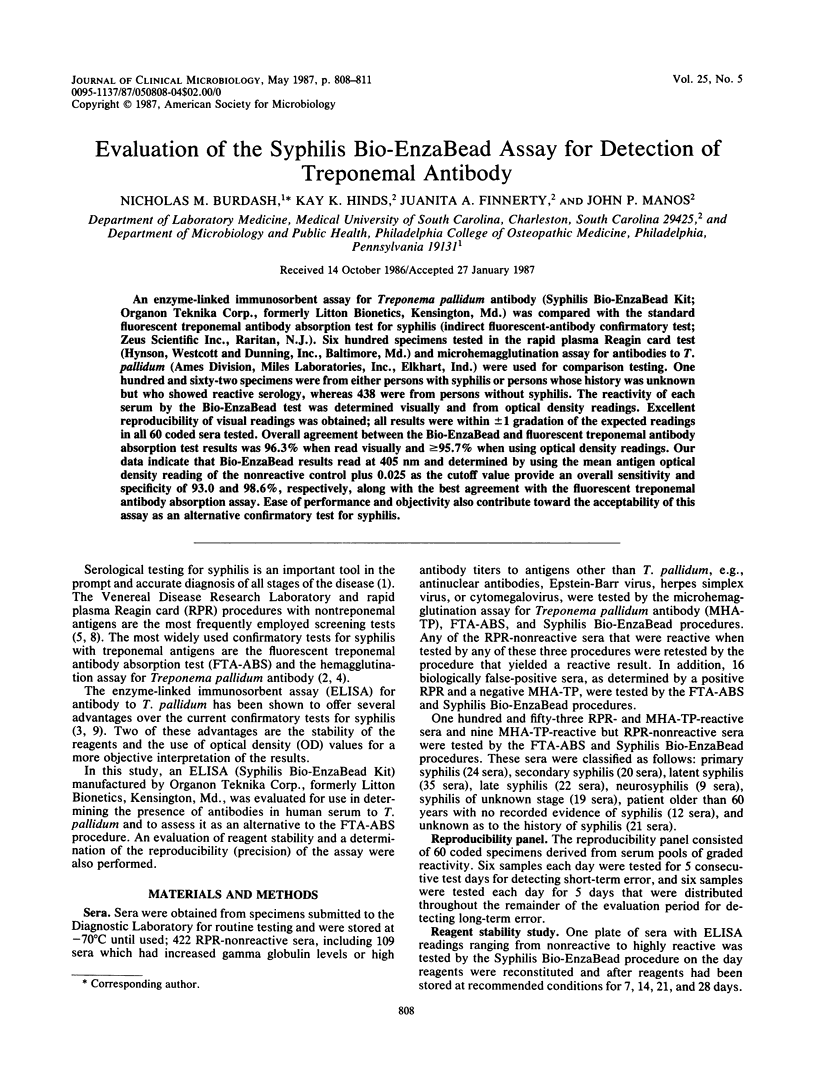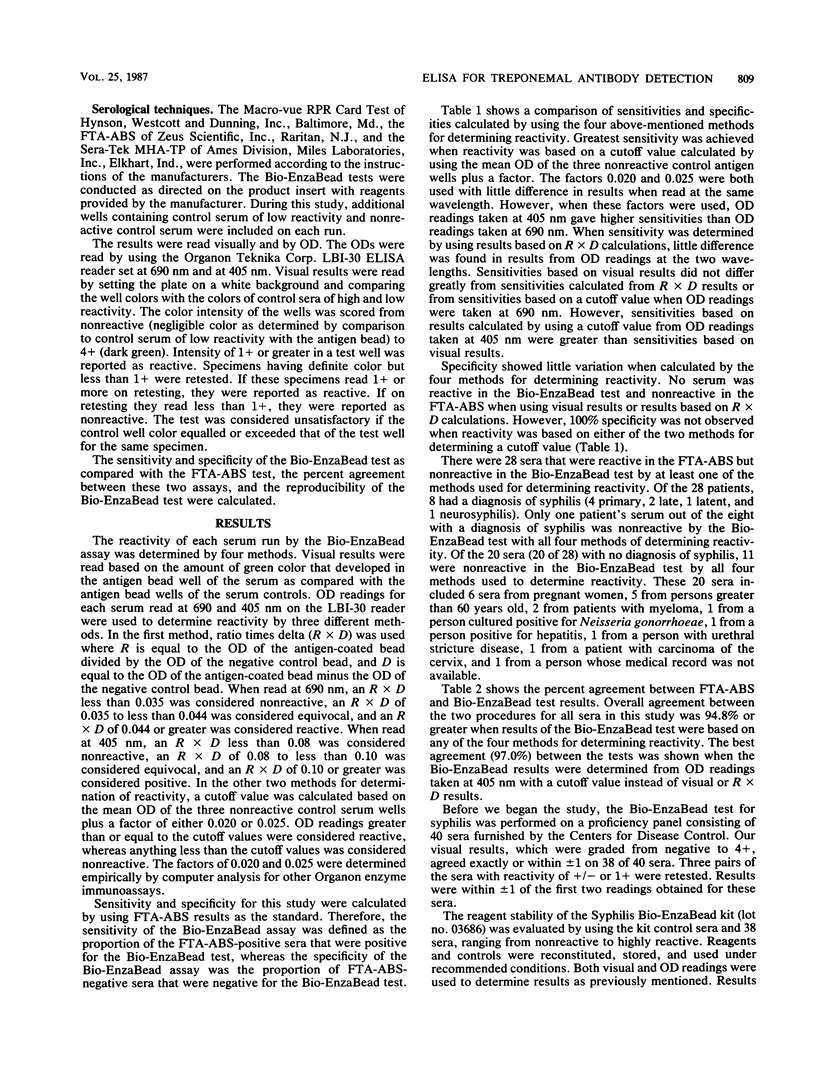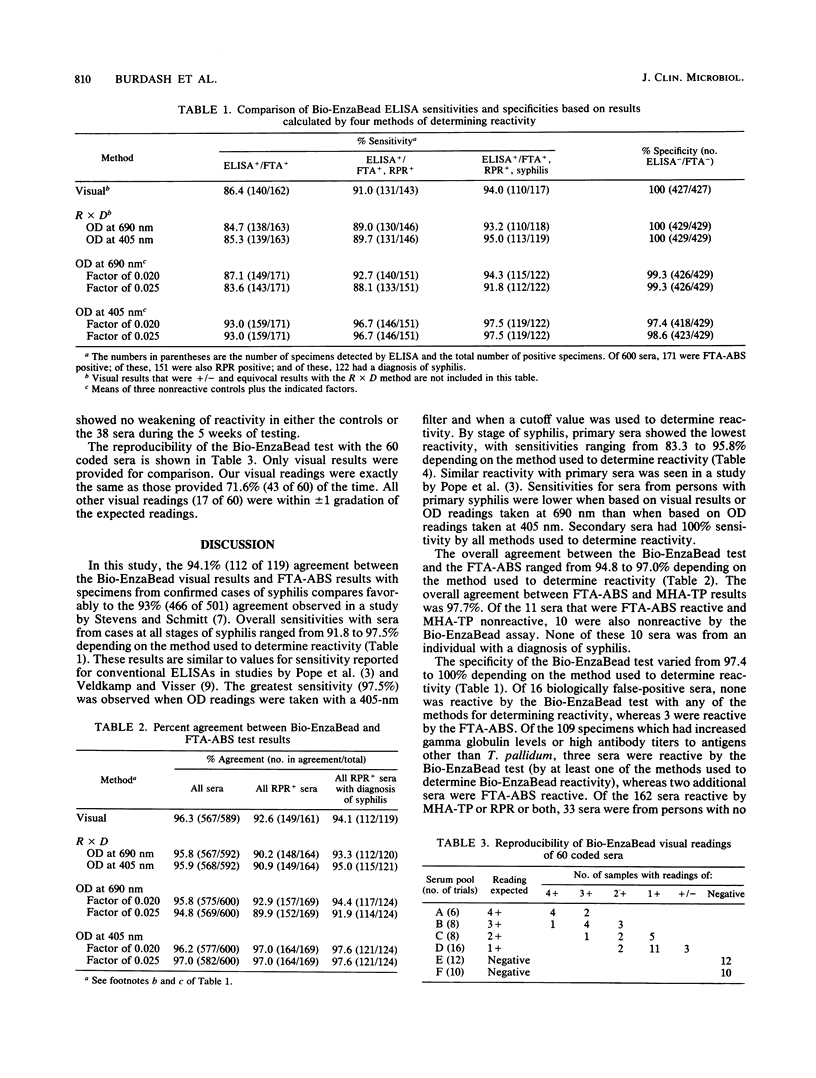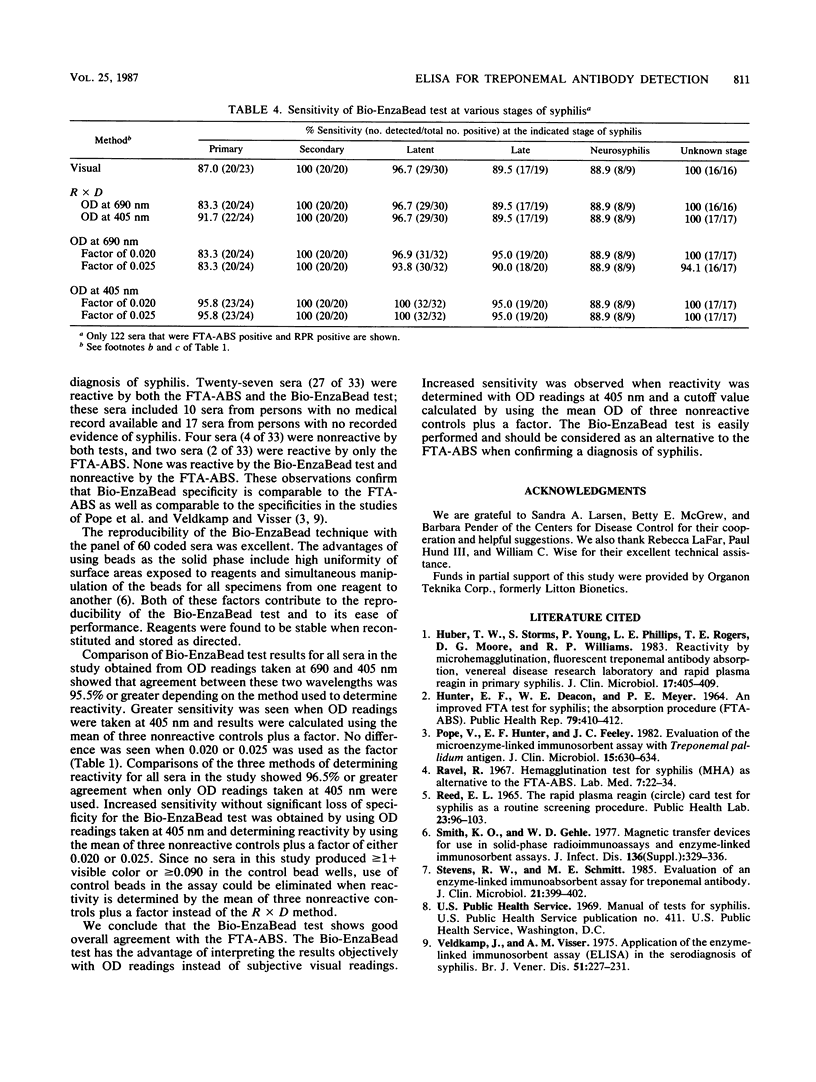Abstract
An enzyme-linked immunosorbent assay for Treponema pallidum antibody (Syphilis Bio-EnzaBead Kit; Organon Teknika Corp., formerly Litton Bionetics, Kensington, Md.) was compared with the standard fluorescent treponemal antibody absorption test for syphilis (indirect fluorescent-antibody confirmatory test; Zeus Scientific Inc., Raritan, N.J.). Six hundred specimens tested in the rapid plasma Reagin card test (Hynson, Westcott and Dunning, Inc., Baltimore, Md.) and microhemagglutination assay for antibodies to T. pallidum (Ames Division, Miles Laboratories, Inc., Elkhart, Ind.) were used for comparison testing. One hundred and sixty-two specimens were from either persons with syphilis or persons whose history was unknown but who showed reactive serology, whereas 438 were from persons without syphilis. The reactivity of each serum by the Bio-EnzaBead test was determined visually and from optical density readings. Excellent reproducibility of visual readings was obtained; all results were within +/- 1 gradation of the expected readings in all 60 coded sera tested. Overall agreement between the Bio-EnzaBead and fluorescent treponemal antibody absorption test results was 96.3% when read visually and greater than or equal to 95.7% when using optical density readings. Our data indicate that Bio-EnzaBead results read at 405 nm and determined by using the mean antigen optical density reading of the nonreactive control plus 0.025 as the cutoff value provide an overall sensitivity and specificity of 93.0 and 98.6%, respectively, along with the best agreement with the fluorescent treponemal antibody absorption assay. Ease of performance and objectivity also contribute toward the acceptability of this assay as an alternative confirmatory test for syphilis.
Full text
PDF



Selected References
These references are in PubMed. This may not be the complete list of references from this article.
- HUNTER E. F., DEACON W. E., MEYER P. E. AN IMPROVED FTA TEST FOR SYPHILIS, THE ABSORPTION PROCEDURE (FTA-ABS). Public Health Rep. 1964 May;79:410–412. [PMC free article] [PubMed] [Google Scholar]
- Huber T. W., Storms S., Young P., Phillips L. E., Rogers T. E., Moore D. G., Williams R. P. Reactivity of microhemagglutination, fluorescent treponemal antibody absorption, Venereal Disease Research Laboratory, and rapid plasma reagin tests in primary syphilis. J Clin Microbiol. 1983 Mar;17(3):405–409. doi: 10.1128/jcm.17.3.405-409.1983. [DOI] [PMC free article] [PubMed] [Google Scholar]
- Pope V., Hunter E. F., Feeley J. C. Evaluation of the microenzyme-linked immunosorbent assay with Treponema pallidum antigen. J Clin Microbiol. 1982 Apr;15(4):630–634. doi: 10.1128/jcm.15.4.630-634.1982. [DOI] [PMC free article] [PubMed] [Google Scholar]
- Stevens R. W., Schmitt M. E. Evaluation of an enzyme-linked immunosorbent assay for treponemal antibody. J Clin Microbiol. 1985 Mar;21(3):399–402. doi: 10.1128/jcm.21.3.399-402.1985. [DOI] [PMC free article] [PubMed] [Google Scholar]
- Veldkamp J., Visser A. M. Application of the enzyme-linked immunosorbent assay (ELISA) in the serodiagnosis of syphilis. Br J Vener Dis. 1975 Aug;51(4):227–231. doi: 10.1136/sti.51.4.227. [DOI] [PMC free article] [PubMed] [Google Scholar]


